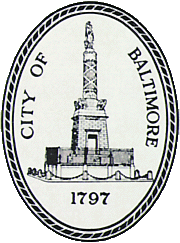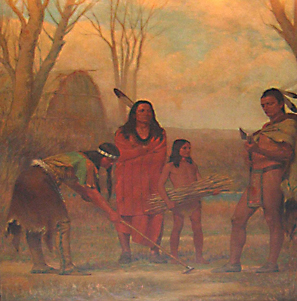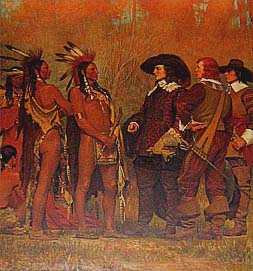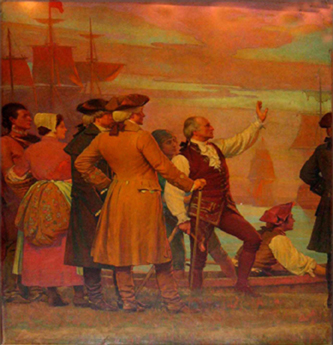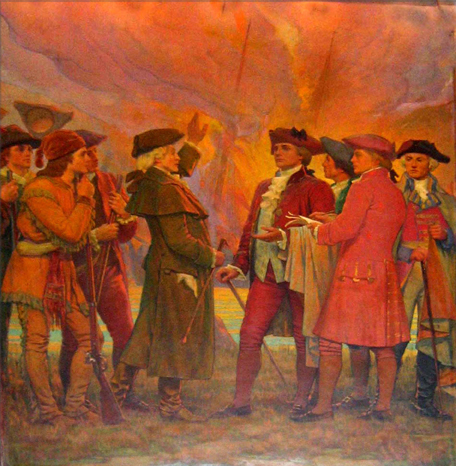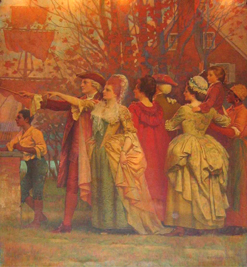The center panel depicts Leonard Calvert negotiating a treaty
with Yaocomico Indian leaders in 1634. The left panel is representative of
Indian domestic life while the right panel represents the family unit settling
in the colony. The following quote is from a letter written by Charles Yardley
Turner read at the occasion of the unveiling of his painting.
The decorative composition represents a conference with the
Indians, having for its object the barter of agricultural implements and
cloth for a tract of land....The paintings are not intended to represent
a particular incident, occurring at a special moment, but are meant to convey
the thought and action which pertained to purchase the land.
The brigantine
Peggy Stewart arrived in Annapolis,
Maryland on Friday, October 14, 1774, laden with more than a ton of
tea. The owners of the ship were Anthony Stewart and his father-in-law
James Dick. The tax for the tea was quickly paid by Stewart, in violation
of a non–importation agreement amongst local merchants. This was not the
first time that Stewart and Dick paid a tax on imported British goods.
The Anne Arundel County Committee decided that the tea should not be
landed and called for a public meeting to determine the final fate of
the cargo on Wednesday October 19, 1774. Although the majority
of the people at the meeting voted against violent measures, the minority
members were determined to burn both the ship and the tea. Stewart finally
consented to burn his own ship out of fear for his own life and concern
that the mob might also burn his house. The burning of the Peggy Stewart
was a seminal event in both Maryland’s and the colonies’ history prior to
the outbreak of the Revolutionary War. The following quote is from a letter
written by Charles Yardley Turner read at the occasion of the unveiling
of his painting.
In the center panel is Charles Carroll of Carrollton and Dr. Warfield
"leader of the mob". In the left panel wearing the white shirt sleeves
is Anthony Stewart. The right panel portrays a group of citizens
near Anthony Stewart's mansion.
In the mural painting , "The Burning of the Peggy Stewart,"
my purpose was to express the protest upon the part of Maryland's citizens
against the oppression of the mother country. The burning vessel has
been used as the symbol and outward manifestation of this protests against
"taxation without representation."
Source: The Burning of the Peggy Stewart & Religious
Toleration in Maryland: Mural Decorations in the Baltimore Courthouse.
Baltimore. The Muncipal Art Society of Baltimore, 1905
